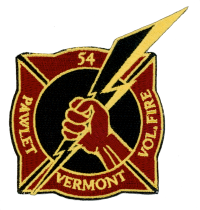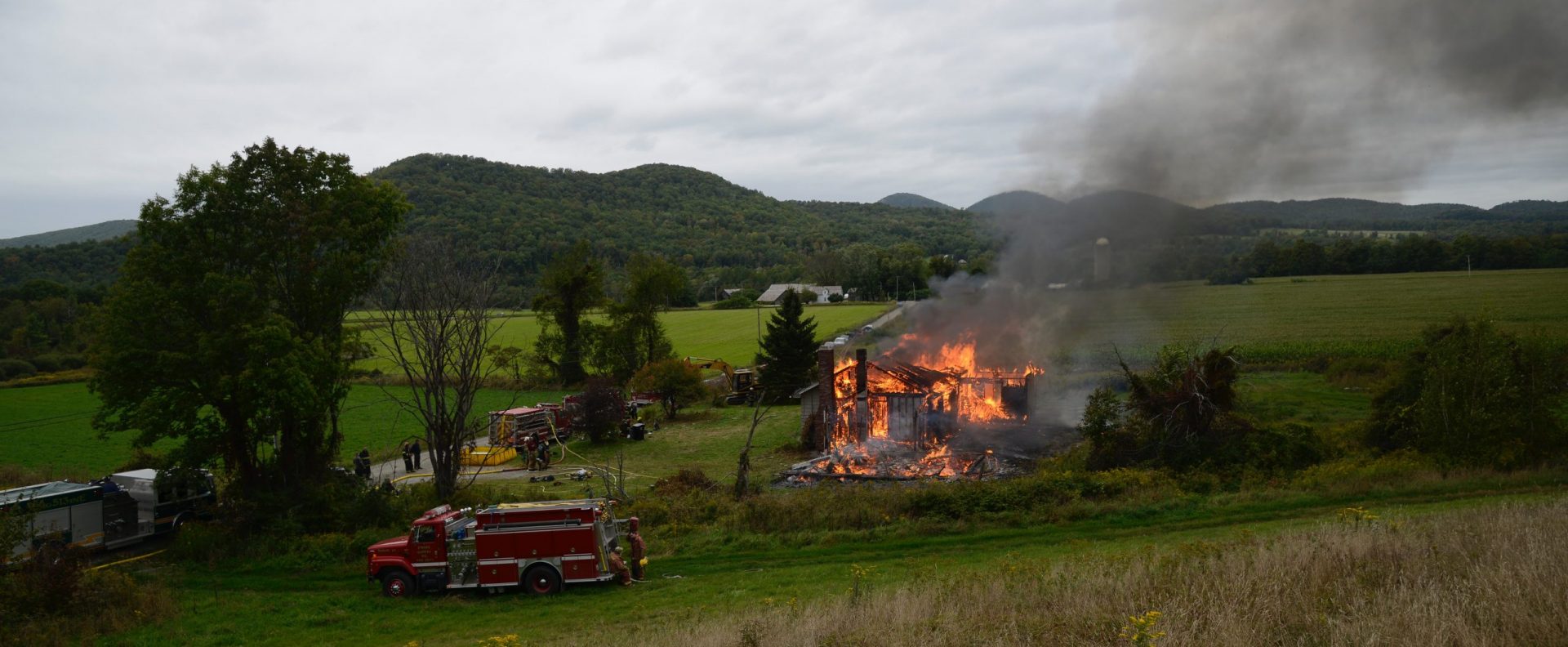UPDATE: We have installed our entire inventory of smoke and CO alarms, and the Division of Fire Safety has discontinued this program. Thank you to everyone who participated! We installed over 50 smoke detectors in Pawlet! We intend to bring the program back to the community if the opportunity comes up in the future.
Though we no longer have smoke alarms to give away, we are still happy to help homeowners to ensure they have what they need. See below for details on how to properly equip your home with smoke alarms.
Smoke Alarm FAQ’s
Why do I need smoke alarms?
Fire is fast– really fast. The amount of time you and your family has to escape a house fire safely can be as little as 120 seconds. Smoke alarms buy you crucial early warning, and this can make the difference between having time to get out safely, and becoming trapped in a fire. 57% of fire deaths in the United States occur in homes with no smoke alarms, or with smoke alarms that don’t work.
Together with home escape planning, smoke alarms ensure that you can safely escape a house fire, day or night.
Smoke alarms have always been important, but think about what makes up a house today. Carpets, furniture, and homegoods today are made form synthetics, which burn HOT and FAST and emit highly toxic smoke. This makes smoke alarms more important today than ever before.
What Type of Smoke Alarms Do I Need?
Smoke alarms use one of two types of sensor: ionization or photoelectric. Vermont law requires photoelectric detectors in residences. They can be standalone or interlinked. The advantage of interlinked detectors is that if one sounds, they all sound, assuring that the alarm is heard throughout the home. Detectors can be powered by home AC power (hard-wrired) with a battery for backup, a removable battery, or a sealed battery. Most homeowners choose battery units for ease of installation. The sealed battery units have the advantage of never requiring maintenance, because the battery lasts the life of the detector.
New construction in Vermont is required to have hard-wired smoke detectors.
What’s Carbon Monoxide, and Do I Need and Alarm for that, too?
Carbon monoxide (CO) is an odorless, invisible gas that all combustion gives off– your fuel-burning heating or cooking appliances, propane dryers, wood stoves, and any type of combustion engine you have (like a generator) all emit carbon monoxide. Normally, CO is vented outside, where it harmlessly dissipates in the air. But if it builds up in your home for some reason, the results can be deadly. In high enough concentrations, CO will incapacitate and kill. An alarm is usually your only indication that CO is present. It is critical that you have CO alarms!
How Many Do I Need, and Where Do I Put Them?
You need an alarm in the vicinity of any bedrooms and on each level of a dwelling. So, if you had a two-floor house with bedrooms upstairs and a basement, you would need three alarms. If the bedrooms upstairs were far apart, you might add a forth, so that there is an alarm near each bedroom. If you have a heating appliance in your bedroom, you should have a smoke alarm inside the room. Smoke alarms should be mounted up high, because smoke rises, but should ideally be in reach so you can change the batteries or press the test button.
Avoid installing smoke alarms right besides cookstoves, above fireplaces, or in other locations where they will create false alarms. If one of your alarms is creating nuisance alarms, don’t disable it– move it!
One CO alarm should be installed on each level of a dwelling. If you have a fuel-burning appliance in a bedroom, you should have an additional CO detector inside the room. CO alarms can be installed anywhere, CO neither rises nor sinks.
Write the date on the detector when you install it, so you know when to replace it.
How Do I Maintain Them?
It’s easy! Press the test button monthly (it should go off). If your pets scatter and hide, watch where they go– that knowledge could save your pets life if there is ever a fire. If you have a battery unit, change the battery when you change your clocks. Replace your detector after 10 years.
Need Help?
Need more help? Have a commercial property you need to figure out fire protection for? Give us a call at (802) 325-3222– we are happy to assist residents with improving fire protection and prevention at any property in our district.

